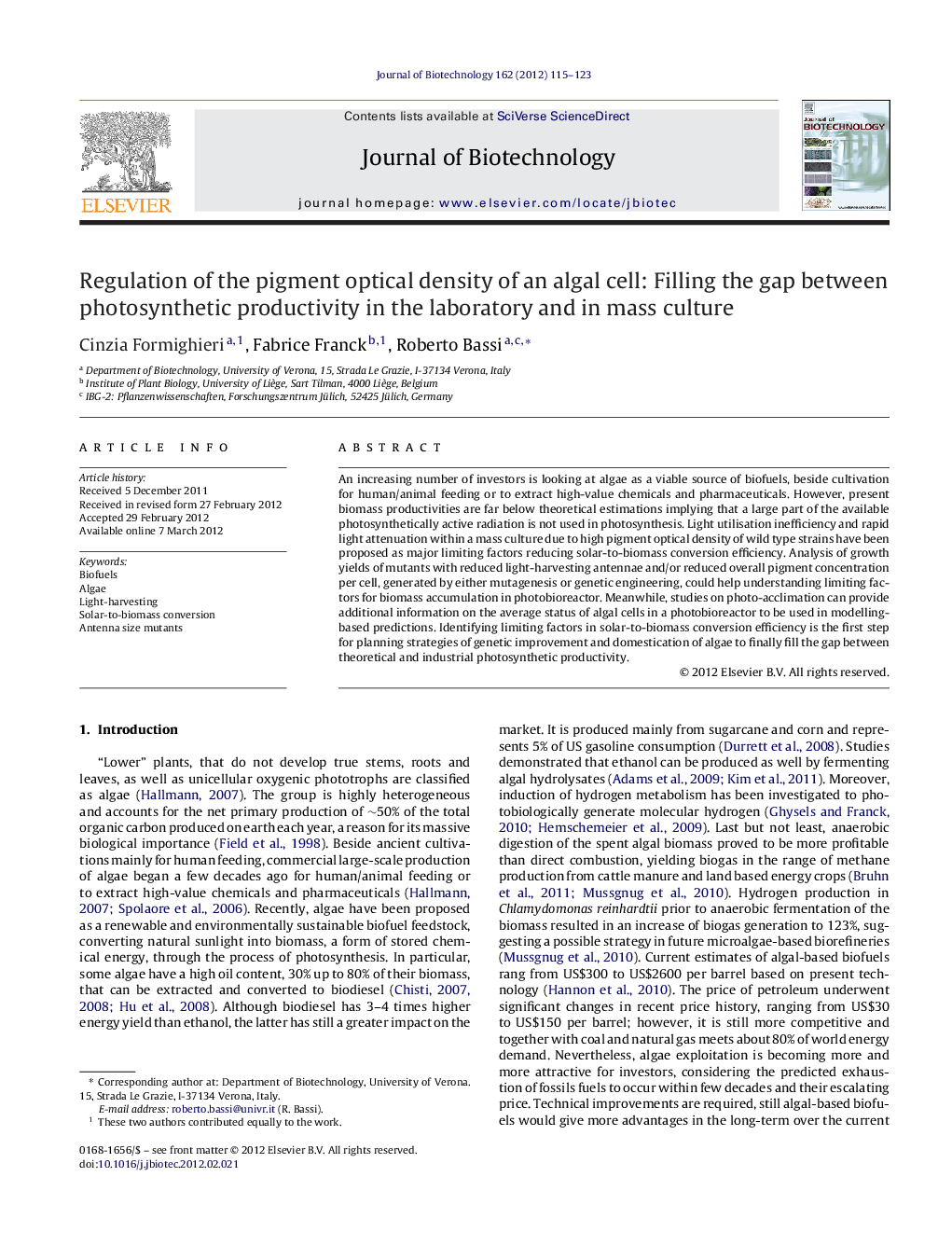| کد مقاله | کد نشریه | سال انتشار | مقاله انگلیسی | نسخه تمام متن |
|---|---|---|---|---|
| 23658 | 43460 | 2012 | 9 صفحه PDF | دانلود رایگان |

An increasing number of investors is looking at algae as a viable source of biofuels, beside cultivation for human/animal feeding or to extract high-value chemicals and pharmaceuticals. However, present biomass productivities are far below theoretical estimations implying that a large part of the available photosynthetically active radiation is not used in photosynthesis. Light utilisation inefficiency and rapid light attenuation within a mass culture due to high pigment optical density of wild type strains have been proposed as major limiting factors reducing solar-to-biomass conversion efficiency. Analysis of growth yields of mutants with reduced light-harvesting antennae and/or reduced overall pigment concentration per cell, generated by either mutagenesis or genetic engineering, could help understanding limiting factors for biomass accumulation in photobioreactor. Meanwhile, studies on photo-acclimation can provide additional information on the average status of algal cells in a photobioreactor to be used in modelling-based predictions. Identifying limiting factors in solar-to-biomass conversion efficiency is the first step for planning strategies of genetic improvement and domestication of algae to finally fill the gap between theoretical and industrial photosynthetic productivity.
► Photosynthesis displays a light saturation curve.
► NPQ limits solar-to-biomass conversion efficiency.
► Optimum Chl concentration exists for maximal integrated net photosynthesis.
► The benefit of reduced antenna size would appear beyond a threshold irradiance.
► Respiratory activity must be taken into account in determining productivity.
Journal: Journal of Biotechnology - Volume 162, Issue 1, 30 November 2012, Pages 115–123